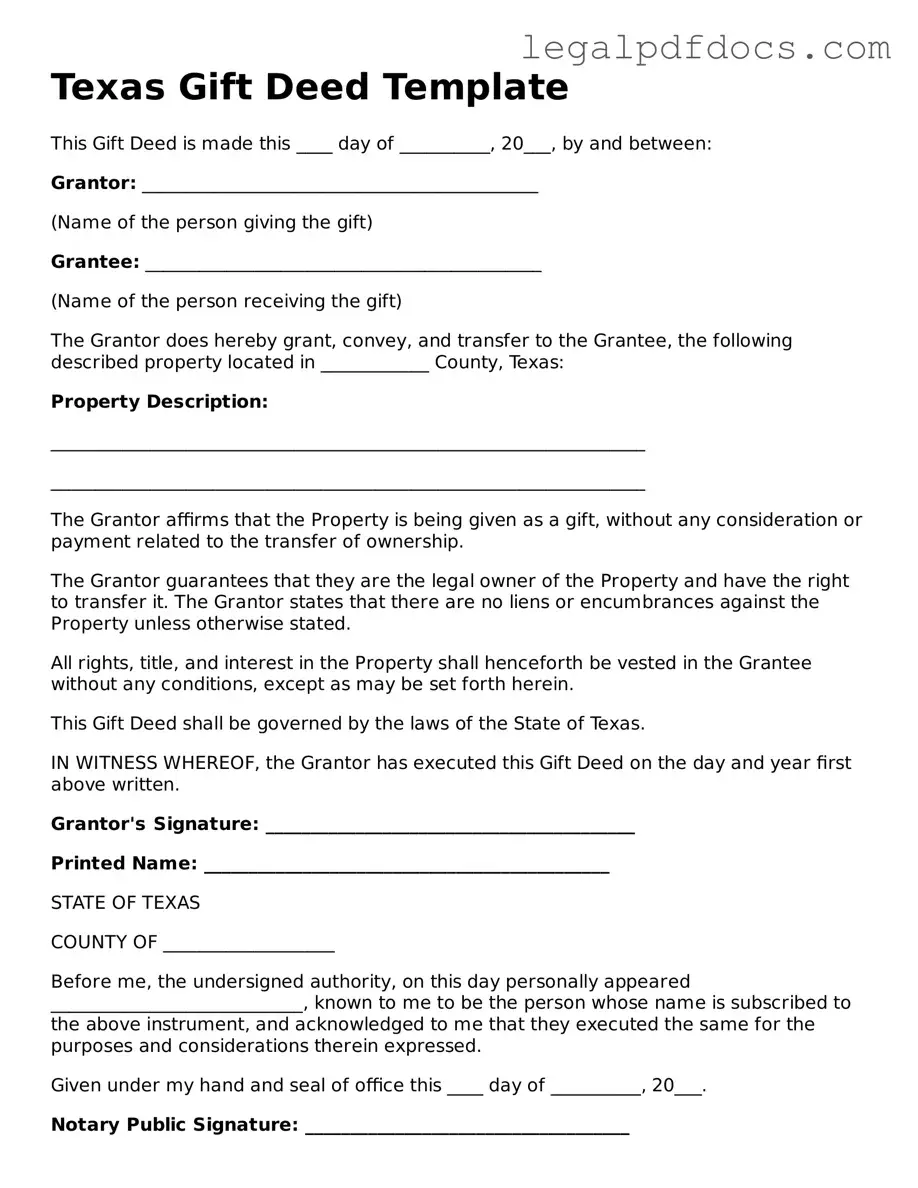Official Gift Deed Form for Texas
A Texas Gift Deed form is a legal document used to transfer property ownership from one individual to another without any exchange of money. This form serves to formalize the gift and ensure that the transfer is recognized by the state. Understanding its importance can help individuals navigate the process of gifting property effectively.
If you are ready to proceed with a property transfer, consider filling out the Gift Deed form by clicking the button below.
Open Gift Deed Editor Here
